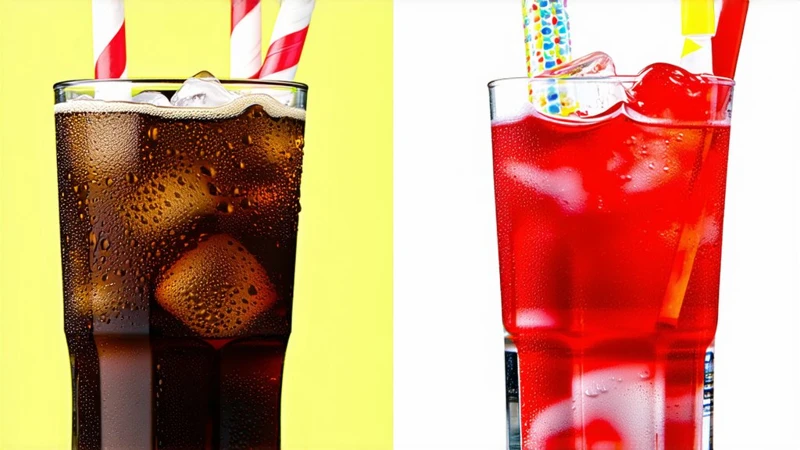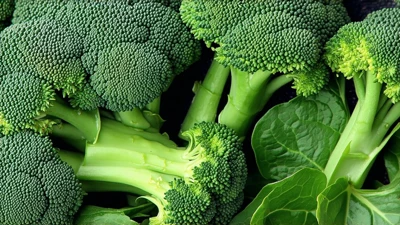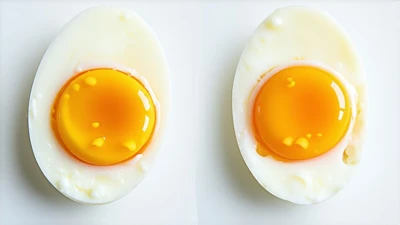
What Is Healthier: Soda Pops or Sports Drinks?
A long-running debate between soda pops and sports drinks has divided health-conscious consumers, casual drinkers, and athletes. While soda pops occupy real estate in convenience stores, even if they dominate cultural traditions, sports drinks market themselves as functional beverages, designed for hydration and recovery. This article breaks down 30 of these considerations — from nutritional value to environmental effects — to find out which drink comes out on top in certain situations.
Comparing Nutritional Profiles
A side-by-side comparison reveals yawning gaps. Soda pops are all about taste — filled with high-fructose corn syrup with artificial flavors and carbonation. Sports drinks, on the other hand, are loaded with electrolytes, carbohydrates, and vitamins to replace nutrients lost while working out.
Table 1: Typical Nutritional Profile, per 12 oz (355 mL)
| Component | Soda Pop | Sports Drink |
|---|---|---|
| Calories | 150 kcal | 80–100 kcal |
| Total Sugar | 39 g | 21 g |
| Sodium | 15 mg | 160 mg |
| Potassium | 0 mg | 45 mg |
| Artificial Colors | Common (e.g., Red 40) | Rare |
Data Source: USDA FoodData Central, 2023.
Sugar Levels: The Sweet Battle
Sodas are well-known for their high sugar content, packing 35–40 grams of sugar per 12 oz can—well beyond the daily maximum recommended by the American Heart Association, which is 25 grams for women and 36 grams for men. Sports drinks have 20–25 grams per 20 oz bottle, but their sugar has a function: It provides energy for extended physical activity.
Personal Take: Sports drinks may have less sugar but are unnecessary for hydration around exercise. A banana and water alternative is a more healthy post-workout option.
Electrolyte Content: The Hydration Component
Electrolytes, such as sodium and potassium, are essential for muscle action and also fluid equilibrium. Sports drinks are king here, with up to 160 mg of sodium and up to 45 mg of potassium per serving, compared to nanoscale electrolyte content for soda.
Caloric Differences
Sodas have ~150 calories per 12 oz, which all comes from sugar. Similarly, sports drinks are less calorically dense at 80–100 calories for 20 oz and still add to caloric intake. Neither is great for keeping weight in check, but sports drinks might have a slight advantage.
Hydration Effectiveness
Water is still the gold standard, but research indicates that sports drinks increase hydration during long workouts (>60 minutes), by replenishing lost electrolytes. Caffeine and sugar can potentially increase dehydration, so sodas are not a great option.
Caffeine Content
Sodas routinely include caffeine (e.g., 34 mg in Coca-Cola, 54 mg in Mountain Dew), whereas conventional sports drinks lack caffeine. More recent "energy sports drinks" combine caffeine and electrolytes, making it hard to draw the lines.
Artificial Preservatives and Additives
Artificial colors also commonly appear in sodas (e.g., Red 40, Blue 1), as well as preservatives such as sodium benzoate. Sports drinks are less likely to contain artificial dyes, but they might use brominated vegetable oil (BVO) in citrus flavors.
Fortification with Vitamins and Minerals
Sports drinks frequently contain B vitamins (B3, B5, B6) and sometimes vitamin C, purported recovery agents. Fortified sodas are not a thing; sodas prioritize flavor over function.
Impact on Dental Health
Sodas are dental dynamite: Their acidity (pH 2.5–3.5) chips away at enamel, and the sugar provides food for cavity-causing bacteria. Sport drinks are still less acidic (pH 3.3–4.5), but can also risk similar thing. A 2022 Journal of the American Dental Association ranking categorized sports drinks as "moderate" and sodas as "high" risk.
Electrolyte Replenishment with Sports Drinks
Sodium lost in sweat is replenished by sports drinks used following intense workouts. A 2019 Sports Medicine review found they cut muscle cramps 37 percent compared to water alone.
Target Audience and Use Cases
Soda Pops: Happenstance, social occasions, nostalgia-based drinking.
Sports Drinks: For athletes, gym-goers, endurance event participants.
Risks of Soda Consumption on Health
Frequent consumption of soda is associated with type 2 diabetes, obesity, and heart disease. A 2021 Circulation study that found people who drank sodas daily had a 16% increased risk of dying.
Sports Drinks and Endurance
More than 90 minutes of exercise benefits from sports drinks to replenish glycogen stores. The American College of Sports Medicine recommends a 6–8% carbohydrate solution, a ratio most sports drinks achieve.
Flavor Variety
Here, sodas reign supreme, and everything from Coca-Cola gives you 20+ flavors. Sports drinks remain stagnant, despite Gatorade, for example, branching out into tropical and berry flavors.
Carbonation Levels
Sodas are high in carbonation (3–4 volumes of CO₂), while sports drinks are usually non-carbonated to reduce any GI discomfort while exercising.
Marketing Strategies
Sodas hinge on nostalgia (Coca-Cola's holiday ads, for instance) and emotion. With Gatorade, performance-minded athletes like Serena Williams, and Powerade, LeBron James, sports drinks are all about the performance.
Cost Comparison
Sodas are $0.25–$0.75 for a 12 oz can and sports drinks average $1.25–$2.00 for a 20 oz bottle.
Table 2: Cost Per Serving (12 oz Equivalent)
| Beverage | Cost |
|---|---|
| Soda Pop | $0.25–$0.75 |
| Sports Drink | $0.78–$1.20 (20 oz) |
Note: Data as of October 2023. Source: Nielsen Retail Data, 2023.
Environmental Impact
Sodas typically use aluminum cans (which are recycled in 50 percent of cases in the U.S.), while sports drinks use plastic bottles (30 percent). Both industries are under fire for their single-use packaging.
Cultural Popularity
Soda consumption, worldwide, is down (15% since 2000), whereas sales of sports drinks grew 7% over 2020–2023.
Public Health Recommendations
The WHO recommends limiting the intake of sugar-sweetened drinks, including sports drinks, to<10% of your daily calories. For non-athletes, the American Academy of Pediatrics recommends against sports drinks.
Low-Sugar Options
The diet sodas include aspartame or stevia, while the "zero sugar" sports drinks (e.g., Powerade Zero) use erythritol in place of sucrose.
Sodium Content
Assuming a sodium sweat loss you need to replace of 160 mg, sports drinks typically have 160 mg sodium per serving. Sodas have low sodium content but are consumed in larger quantities so they add up to a lot of sodium in the diet.
Use Cases
Pick Soda: Social events, rare indulgences.
Opt for Sports Drinks: After exercise, in endurance exercise.
Regional Preferences
In Asia, humid climates and fitness culture have made sports drinks like Pocari Sweat ubiquitous. In the U.S., 54% of adults drink soda at least once a week.
Sustainability Efforts
Coca-Cola plans to achieve 100 percent recyclable packaging by 2025, and Gatorade is testing plant-based bottles. Some progress is being made — but both industries are being pushed to reduce plastic usage.
Conclusion: Context Matters
Neither drink is unequivocally "better." Sports drinks serve a niche function in athletic recovery, while sodas fill a casual-consumption role (but both of those things should be sampled sparingly). For most, water is still the best choice, with sports drinks saved for strenuous activity and sodas as periodic treats.
Final Word: I drink infused water or herbal tea every day, but I have a stash of electrolyte tablets for long hikes. Everything in moderation, and pay attention.

















